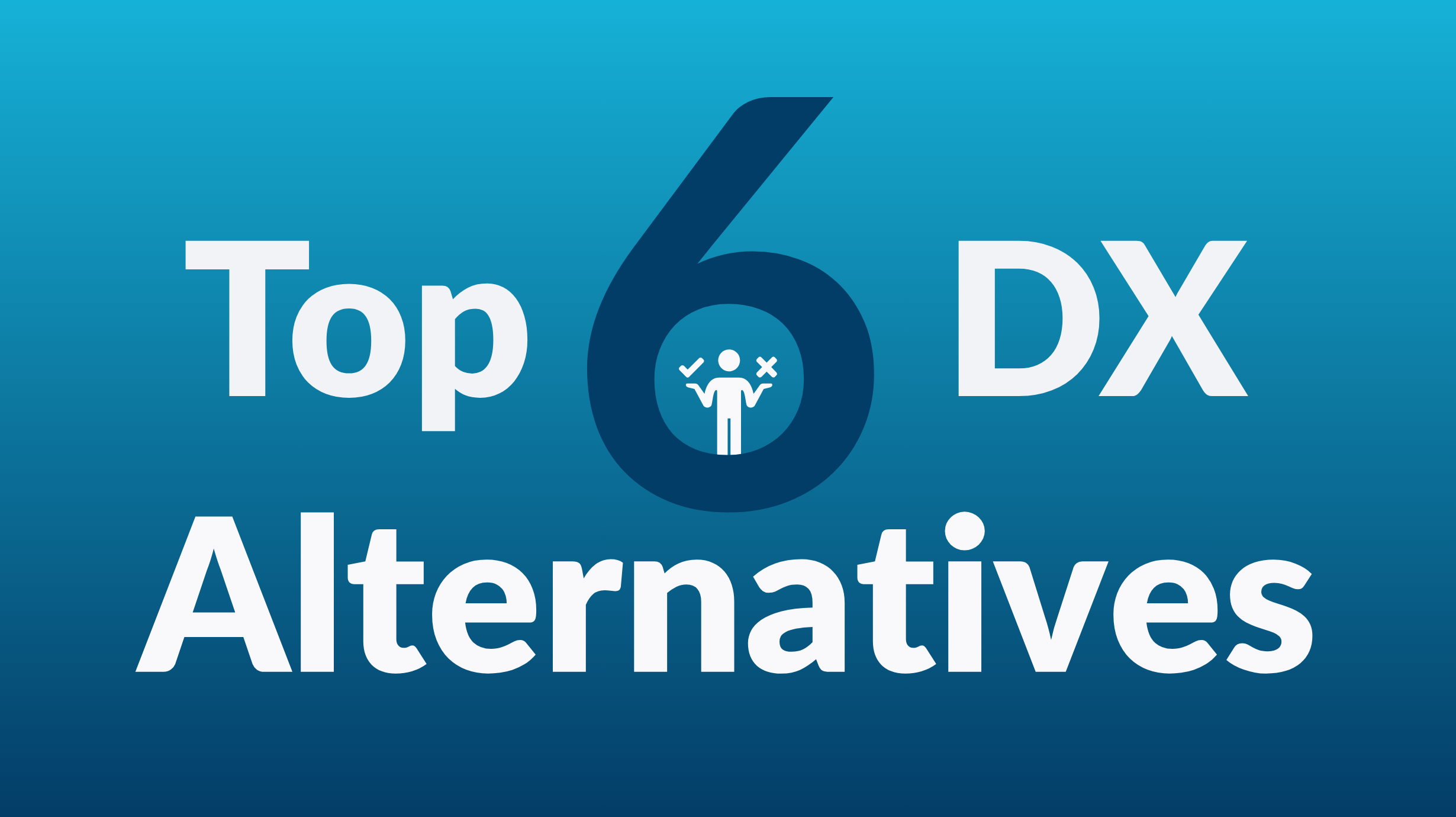Fill out this form to speak to a product expert.
The Complete Checklist for How to Create a Jira Ticket
AI is raising the bar for clarity in engineering workflows. Discover how to create a Jira ticket that’s complete, context-rich, and actionable for both your teammates and the autonomous agents supporting them.

How to create a ticket in Jira in the age of AI
Jira is a central part of the software development workflow for many teams, serving as the system of record for planning, tracking, and managing engineering work across organizations of all sizes. It serves as a common platform where engineers, product managers, product owners, and QA teams work together to coordinate priorities, share context, and validate progress.
Central to that information sharing is the Jira ticket.
But here’s the naked truth: developers don’t want to spend too much time writing Jira tickets. They’ve got all the information and context in their head, because they’ve gathered it in standup meetings, Slack chats, and Zoom calls.
As a result, most Jira tickets are no more than Post-It-style reminders for oneself of what to do, like “Update the API.”
But as we enter year three of the GenAI revolution, it’s time to revisit how to create a Jira ticket.
As autonomous agents become integral to engineering operations, comprehensive and well-structured Jira tickets will be indispensable. AI coding agents depend on context-rich, unambiguous information to interpret tasks and execute them with accuracy and efficiency.
If you’re wondering how to create a ticket in Jira that genuinely supports your team as you make the transition to AI-augmented workflows, or if you’ve experienced the slowdown that unclear tickets can cause for new hires or old teammates, this step-by-step guide is designed to help. It covers:
- What teams should consider before opening a new issue
- How to create an effective Jira ticket
- How to maintain the ticket throughout its lifecycle
You’ll also find best practices and common pitfalls to watch for, so your team (humans and AI alike) can work more efficiently and with fewer misunderstandings.
P.S. Everything here is applicable to any task management system like Azure DevOps, GitHub Issues, Asana or Linear.
What to know before you create a Jira ticket
Strong Jira tickets start with clear thinking before you ever click “Create”. Whether your focus is defining requirements, validating behavior, or mapping out how a change fits into the broader system, a little upfront reflection significantly reduces rework, misalignment, and follow-up questions later.
1. Identify the Type of Work
Begin by clarifying what kind of work you’re capturing. This frames expectations for scope, detail, and workflow. Ask yourself:
- Am I describing a feature or user need?
- Is this a technical task required to support or improve the system?
- Is this a bug, and do I understand the conditions in which it occurs?
- Is this a research or discovery effort where the outcome is still unclear?
Understanding the nature of the work and selecting the right issue category ensures that others can interpret and prioritize it correctly.
2. Gather the Context
Before writing the ticket, collect the information someone else would need to understand what’s happening and why it matters. Think about what you’d want if you were picking up this work for the first time. Consider:
- Which part of the system or workflow is affected?
- What background or domain knowledge would help someone understand the issue?
- Are there related discussions, designs, tests, data points, or recent changes connected to this work?
- Are there dependencies or sequencing constraints that impact when or how this can be done?
- For bugs: can you provide clear steps to reproduce and evidence of the problem?
The goal is to eliminate guesswork for the next person who touches the ticket.
3. Clarify the Desired Outcome
Next, define what “done” looks like. This helps align expectations across people who think in different dimensions like requirements, quality, technical implementation, or end-user experience. Reflect on questions like:
- What should be true once the work is complete?
- What behavior should change—and what should stay the same?
- Are there edge cases or constraints that matter here?
- What would help someone confidently say, “Yes, this is done”?
For user stories, capturing the business goal behind the work—the why—helps sharpen what the outcome should achieve and ensures teams build toward the right objective. Pairing a clear outcome with a clear rationale creates stronger acceptance criteria and reduces ambiguity throughout the development process.
4. Confirm You’re Ready to Write the Ticket
Finally, take a quick moment to ensure you’re bringing the complete picture into Jira. Before you write, ask yourself:
- Can I explain the work clearly to someone unfamiliar with it?
- Do I have the evidence and examples needed to support the request?
- Have I checked whether this issue (or something similar) already exists?
Once these pieces are in place, you’re ready to create a ticket that communicates clearly and serves your entire team well.
How to create an effective ticket in Jira
Once you’ve completed the initial preparation, you’re ready to open Jira and create a ticket. The steps below walk through the core elements of a strong Jira ticket and the decisions that shape how well it serves your workflow.
1. Open the Create Issue Form
The create issue form is simple, but the choices you make inside it determine whether the ticket provides clarity or creates confusion. Once you click Create, you’ll see the fields that define the work ahead. Each selection shapes how others will understand, size, and execute the request.
2. Select the Correct Project
Before entering details, make sure the ticket is being created in the right Jira project. Many teams maintain separate boards for different systems, products, domains, or workflows. A ticket placed in the wrong project can easily get lost, misrouted, or blocked in the wrong workflow, slowing progress before work even begins. It can also mislead an AI agent that uses the project board to determine context.
3. Choose the Appropriate Issue Type
Select the issue type that best reflects the work you’re capturing. Common categories areStory, Task, Bug, Epic, Subtask, or Spike. Each category sets different expectations around scope, required information, and review. Choosing the correct type helps teammates and AI agents understand how to interpret and prioritize the ticket.
4. Write a Clear and Descriptive Summary
The summary is the headline that will appear across backlogs, boards, reports, and standups. It should immediately communicate the purpose of the work to anyone scanning the list. Avoid vague or overly broad titles; a clear summary prevents misinterpretation later.
5. Craft a Meaningful Description
The description is where the ticket becomes genuinely actionable. A good description ensures that someone unfamiliar with the context can still understand the problem or need. For example, for bugs, describe what’s happening, where it occurs, and how to reproduce it. If you’re describing features or improvements, explain the intent behind the work, the expected behavior, and what is in or out of scope.
If you’ve ever inherited someone else’s ticket and found it bafflingly sparse, you’ll appreciate why this step is so important.
6. Define Acceptance Criteria
Clarify what must be true for the work to be considered complete. Acceptance criteria act as shared success measures for whoever builds, tests, or reviews the work. When criteria are specific and testable, they reduce ambiguity and support consistent validation across roles.
7. Set Supporting Fields
Depending on your workflow, additional fields—such as labels, components, priority, or estimates—may be necessary. These fields influence planning, filtering, reporting, and routing, so filling them out accurately helps the broader team understand how this work fits into the larger picture. When possible, configuring these fields as selectable options rather than open text helps reduce friction and often leads to more consistent, complete entries.
8. Attach Supporting Evidence
Add any artifacts that make the ticket easier to understand and act on. Logs, screenshots, payload samples, monitoring snapshots, design files, and links to relevant discussions or code all help others grasp the full context without chasing additional information. And remember: AI agents’ effectiveness is directly tied to the information they receive upfront. The more explicit and specific information you include with your Jira ticket, the more value they can provide.
9. Review the Ticket for Completeness
Before submitting, take a moment to read the ticket as if you were encountering it for the first time. Does it tell a coherent story? Is it clear what needs to be done and why? Are the details sufficient for someone else to pick it up without additional explanation? A quick review ensures the ticket stands on its own.
10. Click Create
Once everything is in place, click Create and the ticket enters your engineering workflow. A well-crafted ticket sets your team up for smoother development, cleaner reviews, and fewer surprises downstream.
How to maintain a Jira ticket through the development lifecycle
Creating a Jira ticket is only the beginning. As work progresses, the ticket should evolve alongside it. Keeping a ticket accurate and up to date ensures that everyone involved—whether defining the work, building it, testing it, or coordinating it—has a clear understanding of what’s happening and what comes next.
1. Add New Information as You Learn It
As the work unfolds, new insights, edge cases, or unexpected details almost always surface. Capture these directly in the ticket—either through comments or by updating the description—so the full history stays visible in one place. This ongoing record helps anyone who reviews, tests, or revisits the work later understand how it evolved and why certain decisions were made.
2. Keep the Ticket Status Accurate
Teams keep track of progress, coordinate handoffs, and identify blockers with statuses. Jira provides default statuses like To Do, In Progress, and Done, and many organizations also add custom ones such as Waiting on Clarification or Dev Complete to better reflect their workflows. A status that’s out of sync can skew reporting, misrepresent progress, and create confusion, so keeping statuses up to date is essential for maintaining clear visibility across the team.
3. Link Related Work and Dependencies
During implementation, you may create follow-up tasks, find related issues, or open pull requests. Link these items to the original Jira ticket so the relationships between pieces of work are clear and the path from requirements to code changes remains easily traceable. Jira’s linking features make it easier to track dependencies, understand how work connects, and ensure nothing gets overlooked across code, tickets, or systems.
4. Confirm the Work Meets the Definition of Done
Before marking a ticket as “Done,” ensure that all completion criteria have been met. That often means more than simply writing code. Tests should be updated, documentation may need revisions, feature flags might require adjustments, and monitoring or alerting may need to be added. A ticket closed too early can create downstream issues and may need to be reopened or transitioned back to an earlier status in the workflow.
Common pitfalls and best practices for writing high-quality Jira tickets
Even with a clear workflow in place, teams can still run into common issues when creating or maintaining Jira tickets. The table below highlights frequent pitfalls along with the best practices that help prevent them.
Improving outcomes through high-quality Jira tickets
Learning how to create a Jira ticket and maintain it well is a subtle but important skill across the software development lifecycle. Strong tickets blend into the workflow, helping teams and autonomous agents collaborate, build, and deliver more effectively. When problems are articulated clearly, goals are well-defined, and the right details are captured, the entire development process becomes smoother and more predictable.
And as an added benefit, strong Jira practices significantly enhance the value of Software Engineering Intelligence platforms. When tickets are clear, complete, and consistently maintained, these platforms can produce precise, high-value insights—turning Jira into a reliable source of truth for reporting, planning, and resource allocation. If you're ready to turn your development workflow into a strategic advantage, we’d be happy to show you what’s possible with your Jira data. Contact us for a demo today.
Read the report to uncover what’s holding teams back—and how to fix it fast.

What to measure and why it matters.
And the 5 critical practices that turn data into impact.

More articles for you

What Is a Jira Ticket? Everything You Need to Know

What is Software Engineering Intelligence and Why Does it Matter in 2025?


